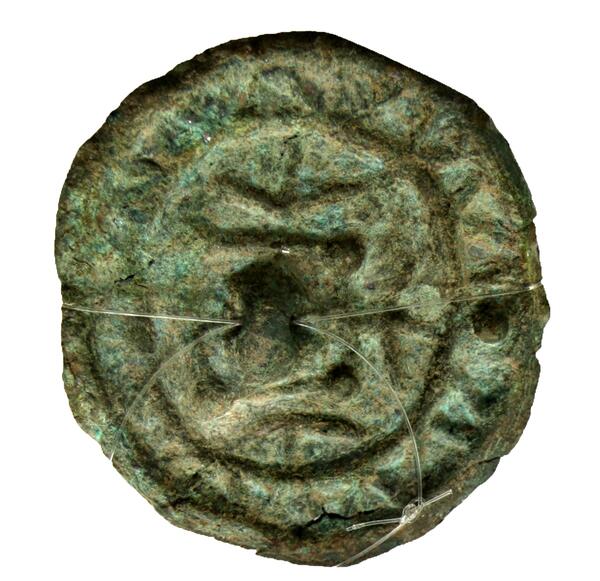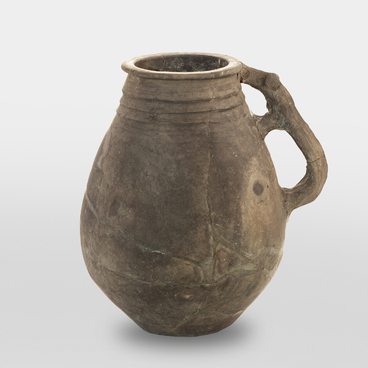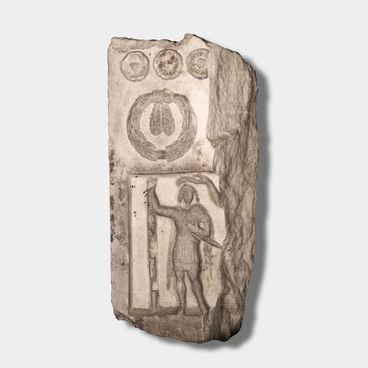The Tanais Archaeological Museum-Reserve houses a bronze mirror with a loop in the center. It was discovered in a burial mound during excavations near Tanais in 1990.
Similar mirrors have been found in other, faraway areas, such as the Kuban, Crimea, Caucasus, and Volga regions. The back of the mirror features a symmetrical decorative composition. In the center, there is a segmented loop embedded in a square. It has miniature hemispherical projections at each corner. Bead-shaped segments with three projections, the so-called “bird feet”, extend from the center of the square sides. The segments are embedded in a concentric bead. Another similar bead runs along the edge of the mirror. Between these two circles, there are segments, which are positioned at an angle to each other and form miniature triangles.
Perhaps the mirror was used as an apotropaic object, that is, a protective charm. This theory is supported by the fact that similar objects have been found sewn into several pouches. Even in ancient times, the miraculous power of mirrors was emphasized by the Greeks in their myths. For instance, Perseus won the fight against the Gorgon Medusa with the help of a mirror. To avoid looking in the eyes of the monster that turned all living things to stone, Perseus looked at his shield as if it were a mirror and managed to cut off Medusa’s head. For a long time, mirrors, just like combs, clasps, fibulae, brooches, and many other objects, had both practical and spiritual significance for a long time. Even today, mirrors are both used as household items and associated with superstition. For example, there is a custom of covering mirrors after the death of a relative and various methods of fortune-telling using mirrors. Such a perception of this object seems to be universally accepted and embedded at the subconscious level.
The magic of a mirror lies in its reflectivity and
the round shape, symbolizing the sun and the sky. Through one’s reflection in
the mirror, a person is connected to these elements. The decorative patterns on
the back of the mirrors were an element of artistic décor and also played a
role in magic. Their elements, such as circles, rays, “bird feet”, and crosses
with bent arms, were associated with the symbols of the sun and sky in the
worldview of ancient peoples. Most likely, such objects were produced in Tanais
or nearby settlements.


